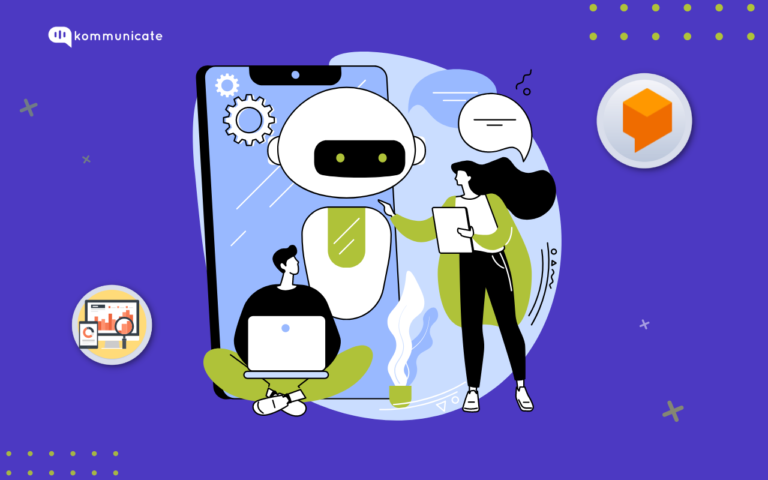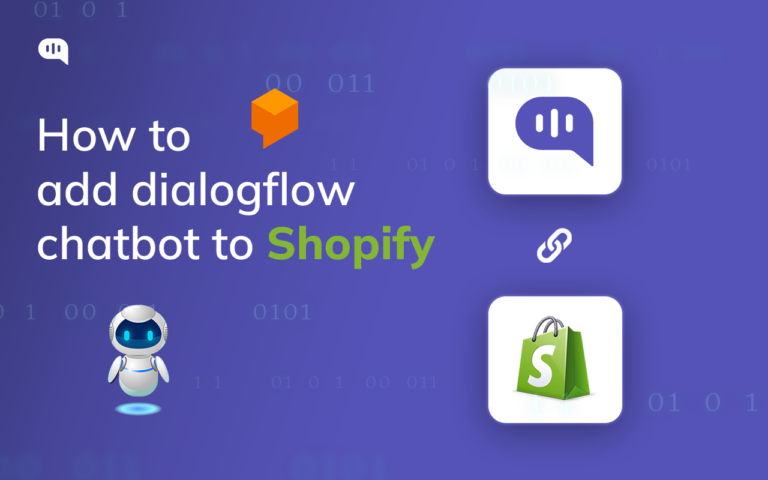Updated on February 12, 2025
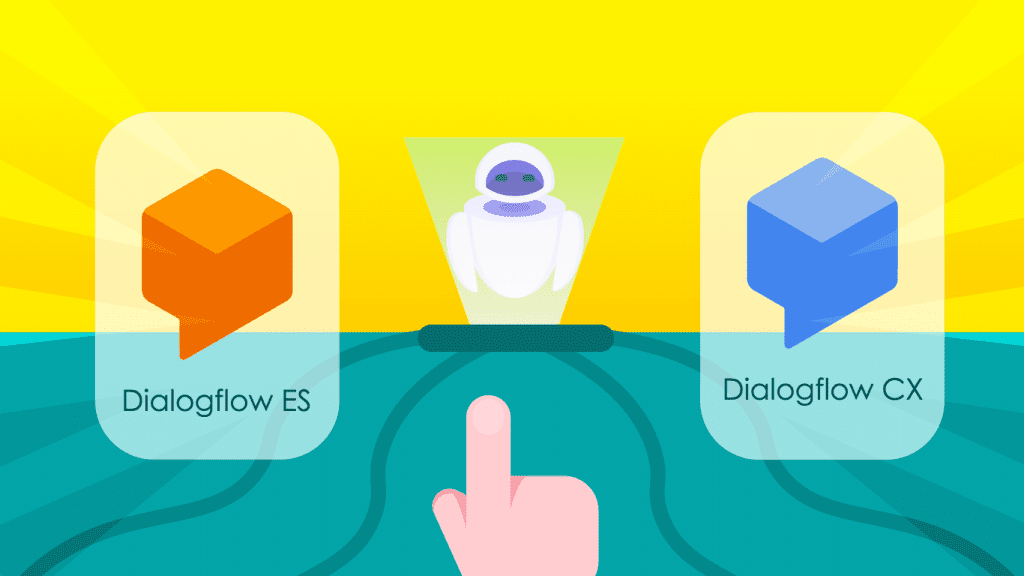
Google Dialogflow recently introduced Dialogflow CX (Customer Experience) – a powerful tool for creating advanced virtual agents. The older version of Dialogflow has been renamed to Dialogflow ES (Essentials). Dialogflow is now a common term to describe both the Dialogflow ES and CX. In this article, we can see the enhancements and limitations of Dialogflow CX vs ES.
Dialogflow CX provides a new way of designing virtual agents, taking a state machine approach to agent design. This gives a clear and explicit control over a conversation, a better end-user experience, and a better development workflow.
New functionalities of Dialogflow CX:
Visual Flow builder
Dialogflow CX is designed explicitly for bot scale implementation. Interacting flow visualizations allow conversation builders to see quickly, understand, and edit their work.
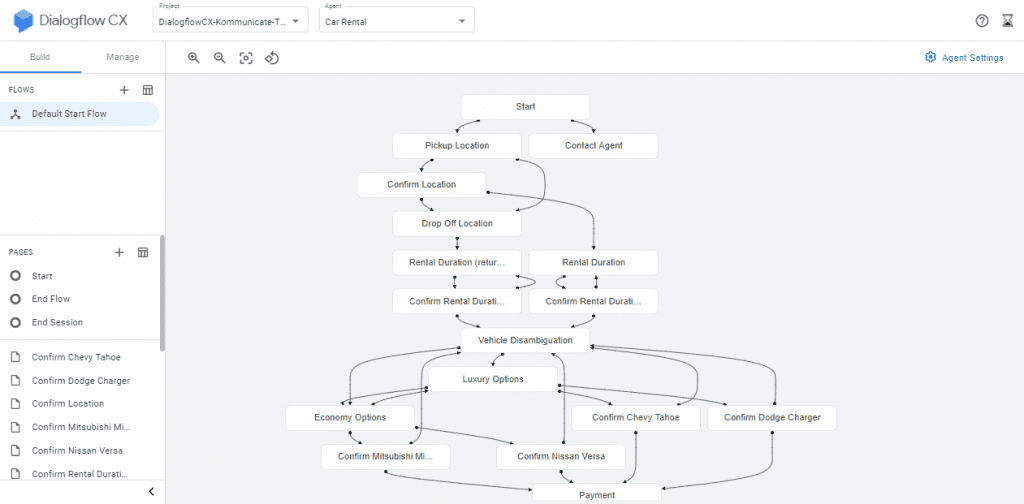
State-based data model
A state-based data model allows developers to reuse intents, intuitively define transitions and data conditions, and handle supplemental questions. In a single virtual agent, separate flows let multiple teams work simultaneously.
You can set conditions for each flow. A conditional trigger determines the route. For example, if a parameter equals a specific value, or if all parameters have been filled.
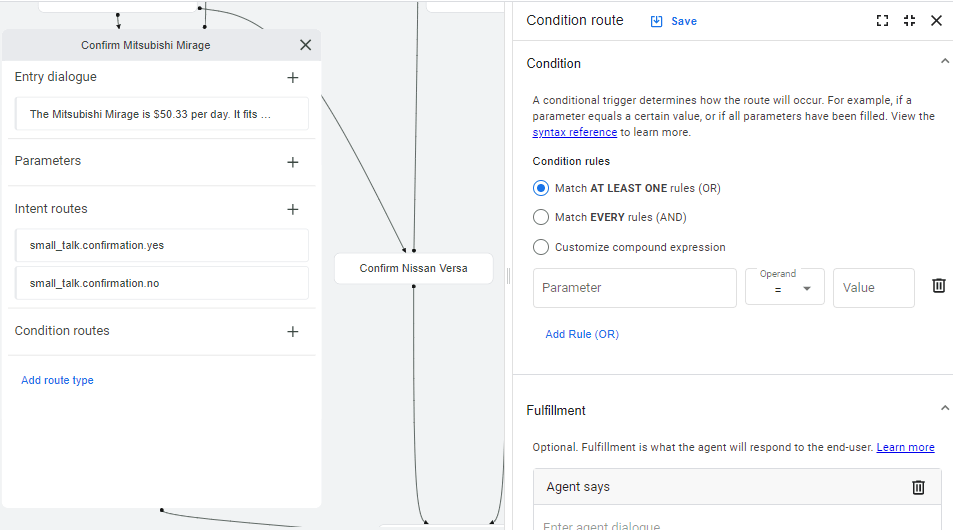
Separate flows
It allows modularization of bot for ease of management. It provides separate teams with the ability to work on independent flows using the same bot. With flows, you can partition your agent into smaller conversation topics. Different team members can own different flows, which makes broad and complex agents easy to build. Also, it supports versioning, and you’ll have the ability to run A/B experiments and split traffic.
For example, a car rental agent may have a pickup location, confirm location, drop off location, etc. as distinct topics. Each topic requires multiple conversational turns for an agent to acquire the relevant information from the end-user.
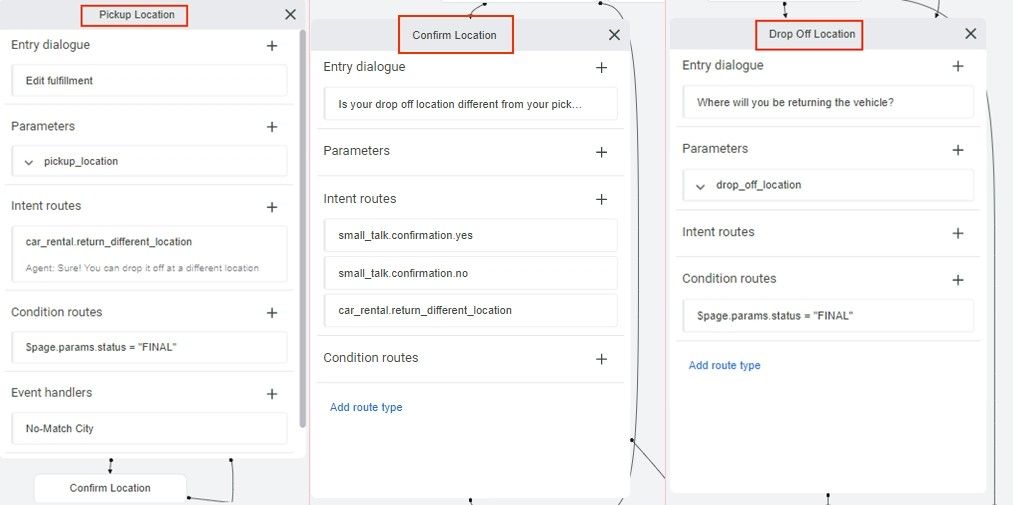
Now that we have explored the newest features of Dialogflow CX, let’s dive into the comparison between Dialogflow CX vs ES.
Comparison between Dialogflow CX vs ES
Intents
An intent categorizes the end-users intention for one conversation turn. For each agent, you define many intents, where your combined intents can handle a complete conversation.
The Dialogflow CX and ES version use intents, however in the Dialogflow CX version, it has been simplified to make it reusable. And intent is not used together with context to control conversation flow. Instead, it works with pages to navigate/route through the conversations.
Conversation control
Dialogflow ES used context to determine the control of the conversation flow. In Dialogflow CX, you can use the page to manage the states of a conversation session. You can use the page to collect information from the end-user related to the state designed on the page.
Slot Filling
Slot filling is the process where the Dialogflow agent continues collecting information from the end-user until the end-user has provided data for each of the required parameters. On Dialogflow ES, there is no way to limit the maximum number of retries. This slot filling issue is now resolved in the Dialogflow CX.
Console UX
Dialogflow ES is mostly a text-based. Since Dialogflow CX has a visual editor, visual graphs showing conversation paths and text forms for configurations improve user experience.
Prebuilt Agents
Prebuilt agents are a collection of agents provided by Dialogflow for everyday use cases. These agents can establish a base for building conversations for ticket booking, hotel booking, car rental, etc. Both the Dialogflow CX and ES have this feature for better usage. Prebuilt agents include intents and entities for their use cases.
Agent/Project
Dialogflow ES supports only one agent per project, while the Dialogflow CX supports 100 agents/project.
CX is an advanced agent type suitable for large or very complex agents with flows, pages, and state handlers to control the conversation paths. Simultaneously, ES is a standard agent type ideal for small to medium and straightforward to moderately complex agents where the intents and contexts are used to control conversation paths.
Here is the quick video
Pricing
Dialogflow ES has the free tier plans on the Trial edition while Dialogflow CX doesn’t have any free tier plan and the paid tier costs $20 per 100 chat sessions for the text feature. Please refer to this article for detailed pricing.
Dialogflow CX vs ES: What are the limitations?
Let’s now discuss the limitations of Dialogflow CX vs ES.
Knowledge connectors
Knowledge connectors complement defined intents. They parse knowledge documents (for example, FAQs or articles) to find automated responses.
👉 Creating FAQ Bot Using Dialogflow (ES) Knowledge Base Connector
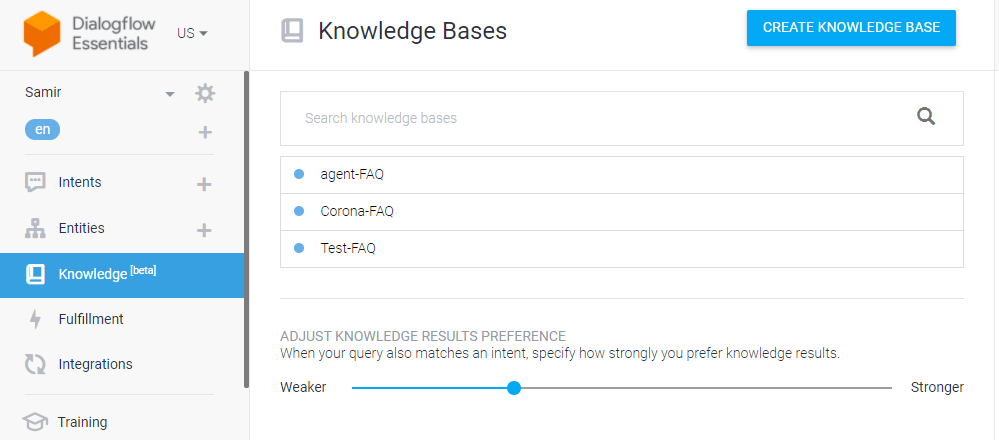
Training data import
When your agent is trained, Dialogflow uses your training data to build a machine learning model specifically for your agent. You usually provide training data by directly entering training phrases to intents. You can also use the Training Tool to analyze, import, export actual conversation data, and improve your training data.
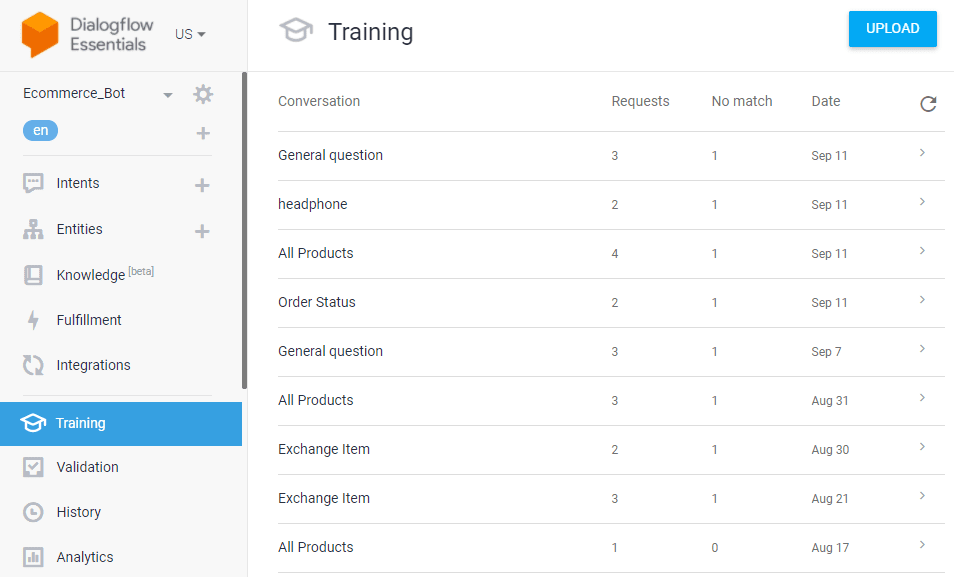
Integrations
Dialogflow ES supports telephony integrations with Genesys, Avaya, etc. Also possible to integrate with many popular conversation platforms like Google Assistant, Slack, Facebook Messenger, Kommunicate, and Google-contributed open-source integrations.
Dialogflow CX currently provides built-in telephony integrations with Avaya and Audio Codes. The support for the rest of the platforms is not available yet.
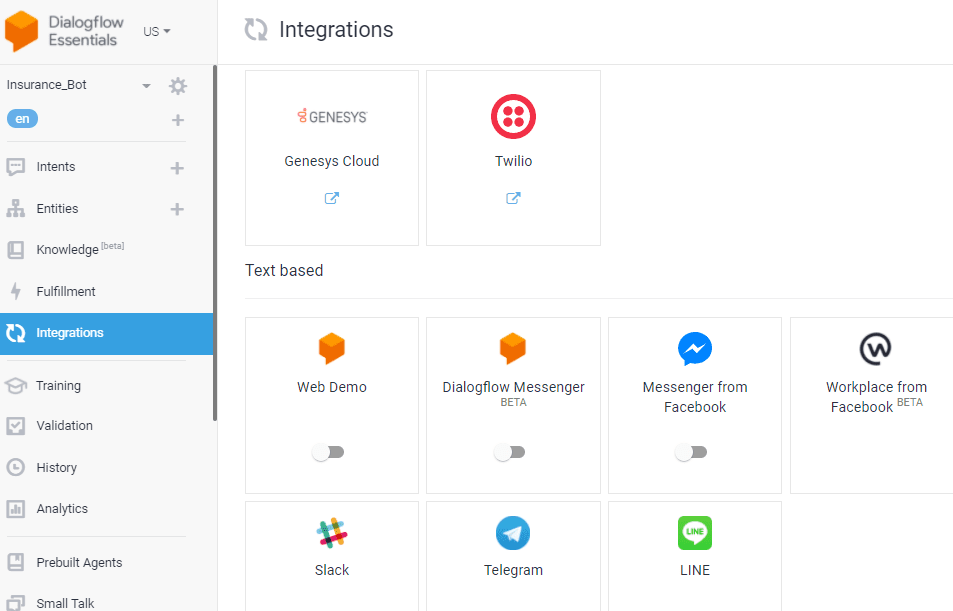
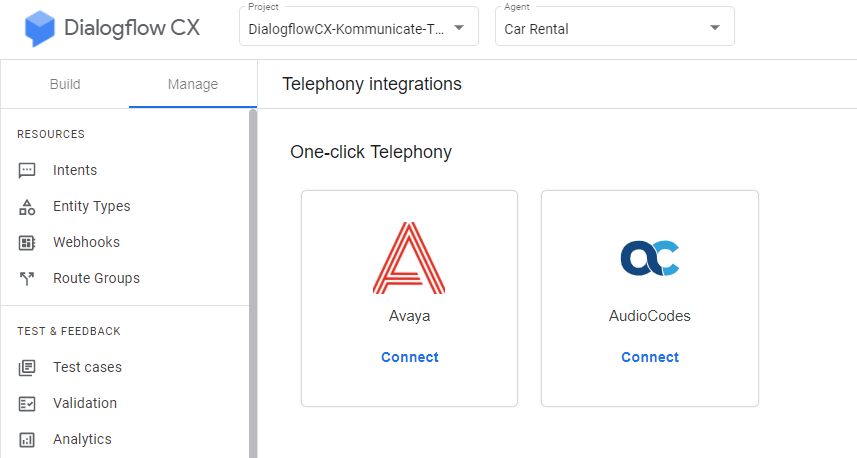
History
The History page shows a simplified version of the conversations your agent has engaged in. These logs are chronological and intended to be an overview of how users interact with your agent. This is not available in CX at the moment.
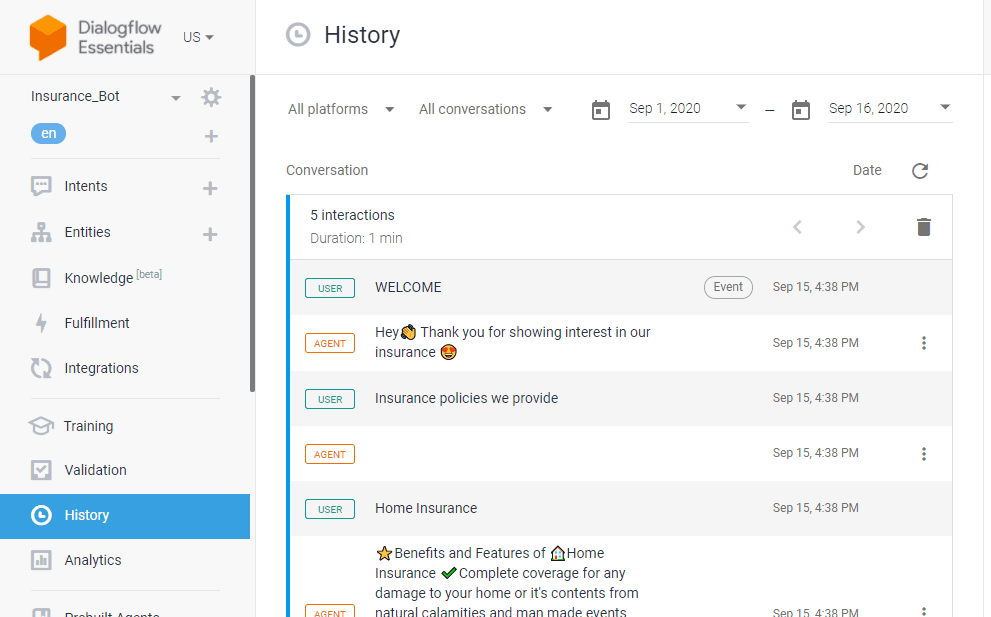
Lack of Support for Multilingual Agents
Dialogflow ES supports multilingual agents, and it supports 32 languages for all the features, while Dialogflow CX doesn’t support any language other than the English. This is a major drawback when you fair Dialogflow ES vs Dialogflow CX. But we will hopefully see the addition of more languages in the future.
Reduce response time, enhance support workflows, and improve customer satisfaction with AI-driven email ticketing from Kommunicate!Wrapping Up
Dialogflow CX is a good product, as it supports features like visualization builder, flow, and condition controlling, which is very much needed for building a good chatbot.
But it’s still in beta and lacks some of the standard version’s features like multilingual language support, Knowledge Connectors, doesn’t support many integrations or any option to import data.
Also, the price of Dialogflow CX is somewhat high compared to ES and might be a crucial part of any project.
Still, it’s good to play with this new product and try out the features.
Here is the quick video
At Kommunicate, we are envisioning a world-beating customer support solution to empower the new era of customer support. We would love to have you on board to have a first-hand experience of Kommunicate. You can signup here and start delighting your customers right away.



